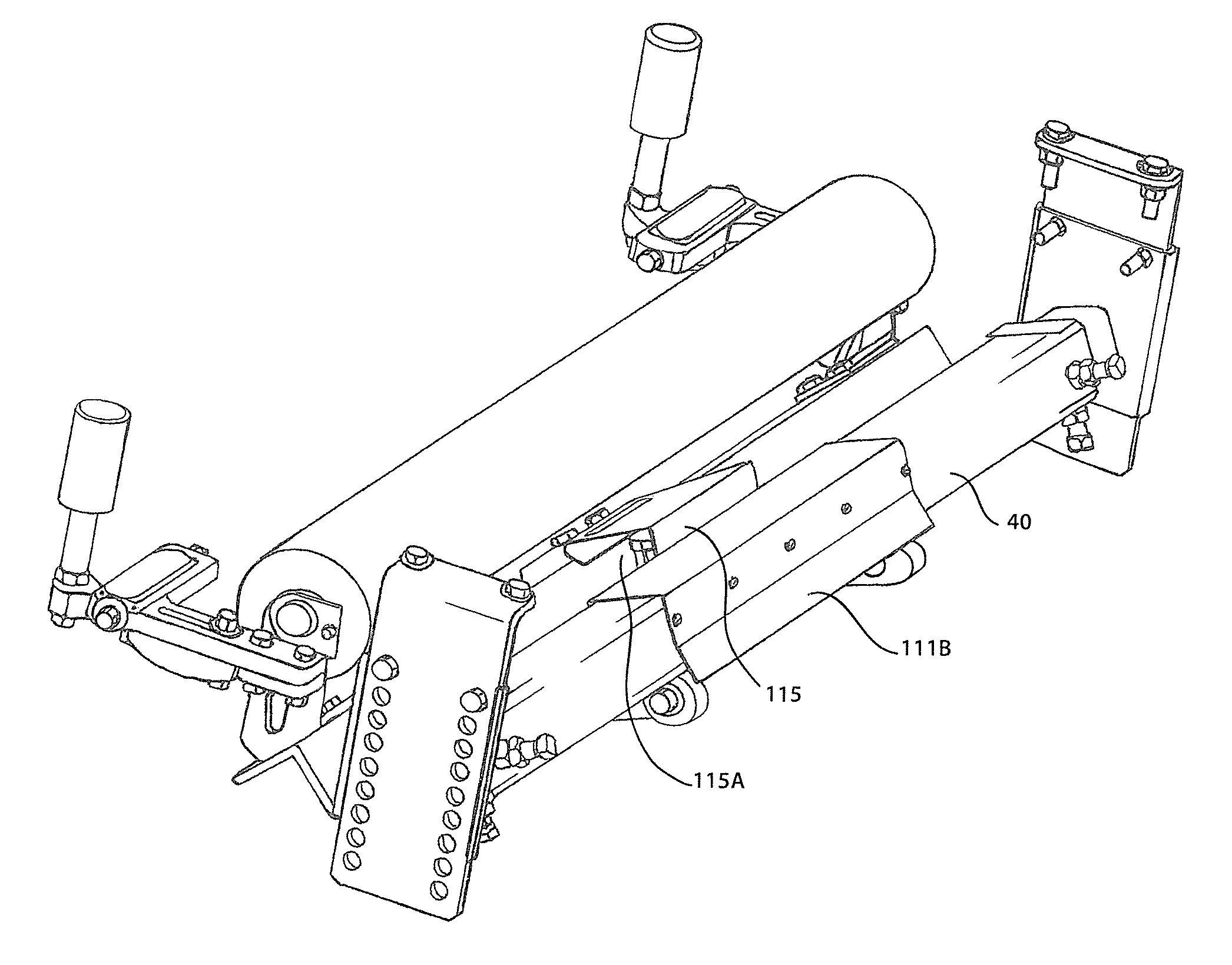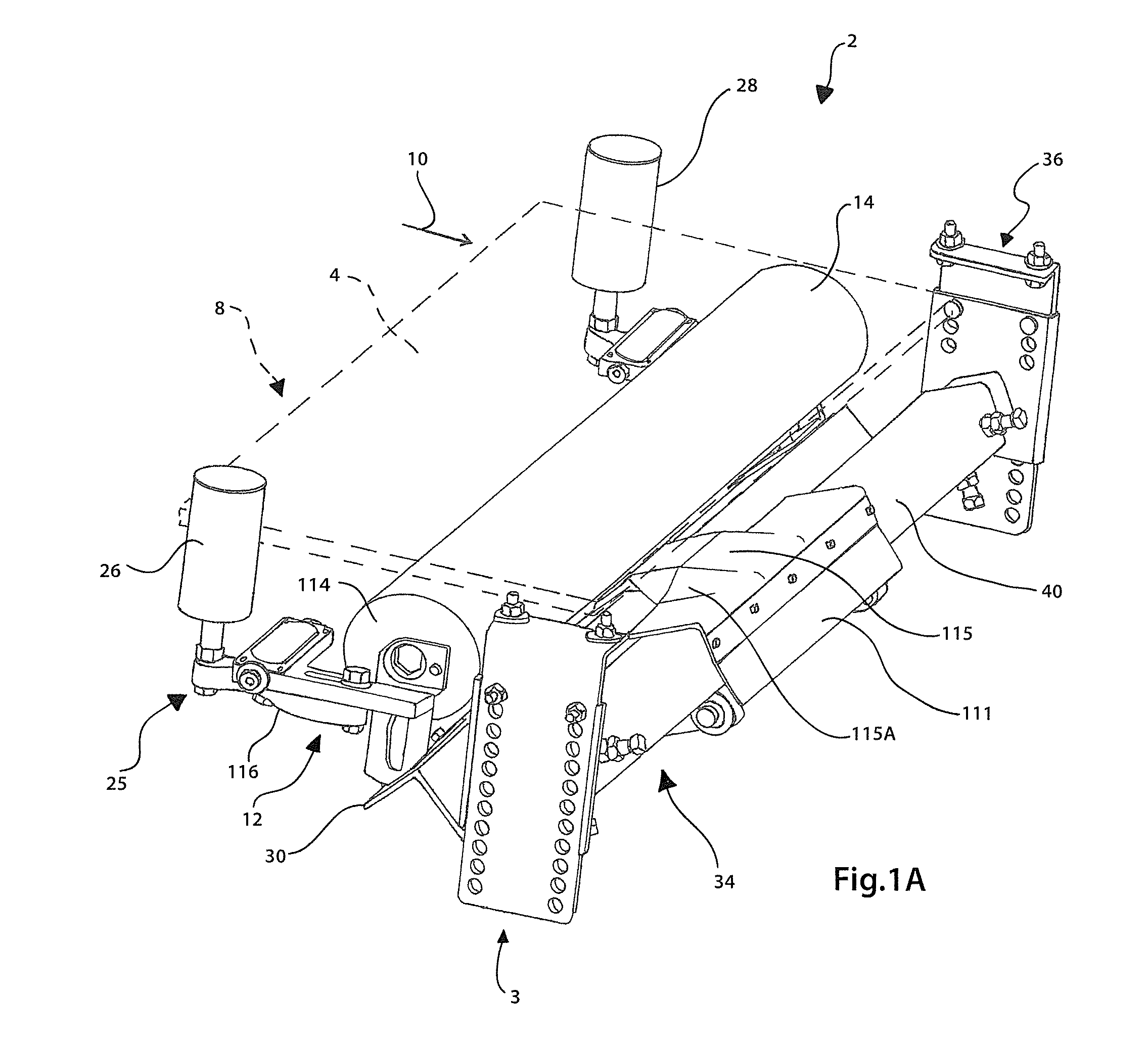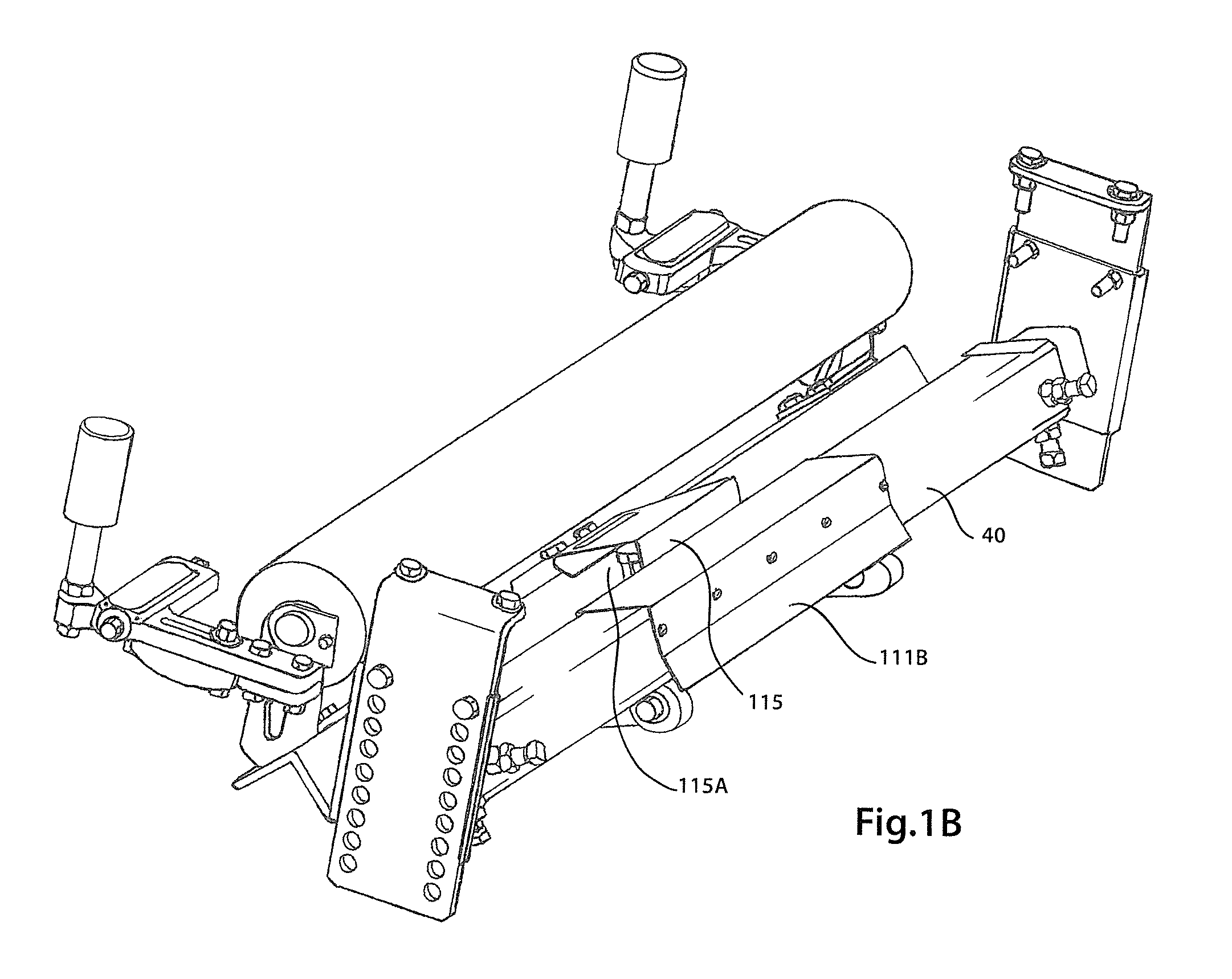Method and apparatus for tracking conveyor belts
a technology of conveyor belts and tracking apparatuses, which is applied in the direction of conveyor parts, rollers, control devices of conveyors, etc., can solve the problems of ineffective correction of belt travel paths, increased mistracking of belts, and reduced friction between, so as to reduce the tension of the mistracking belt edge, increase the tension of the opposite lateral edge, and further mistracking of the belt
- Summary
- Abstract
- Description
- Claims
- Application Information
AI Technical Summary
Benefits of technology
Problems solved by technology
Method used
Image
Examples
Embodiment Construction
[0034]As illustrated in FIGS. 1A-4, a conveyor belt tracking apparatus 2 is well adapted to be utilized with a return run of an endless conveyor belt system (not shown) and is shown positioned under a conveyor belt 4 thereof to track the belt 4 along a generally longitudinal belt travel path, the center of which is indicated at broken line 6 in FIG. 2. To this end, the present conveyor belt tracking apparatus 2 will be described with respect to the return run 8 of an endless conveyor belt 4; however, it will recognized that the principles described herein for the conveyor belt training apparatus 2 can be adapted for use at other locations along the conveyor belt system including beneath the top run of the belt 4. Accordingly, the terminology relating to the orientation of the various components and portions thereof of the belt training apparatus 2 will be in reference to the return run 8 as it passes over the conveyor belt tracking apparatus 2 in a generally longitudinal downstream ...
PUM
 Login to View More
Login to View More Abstract
Description
Claims
Application Information
 Login to View More
Login to View More - R&D
- Intellectual Property
- Life Sciences
- Materials
- Tech Scout
- Unparalleled Data Quality
- Higher Quality Content
- 60% Fewer Hallucinations
Browse by: Latest US Patents, China's latest patents, Technical Efficacy Thesaurus, Application Domain, Technology Topic, Popular Technical Reports.
© 2025 PatSnap. All rights reserved.Legal|Privacy policy|Modern Slavery Act Transparency Statement|Sitemap|About US| Contact US: help@patsnap.com



